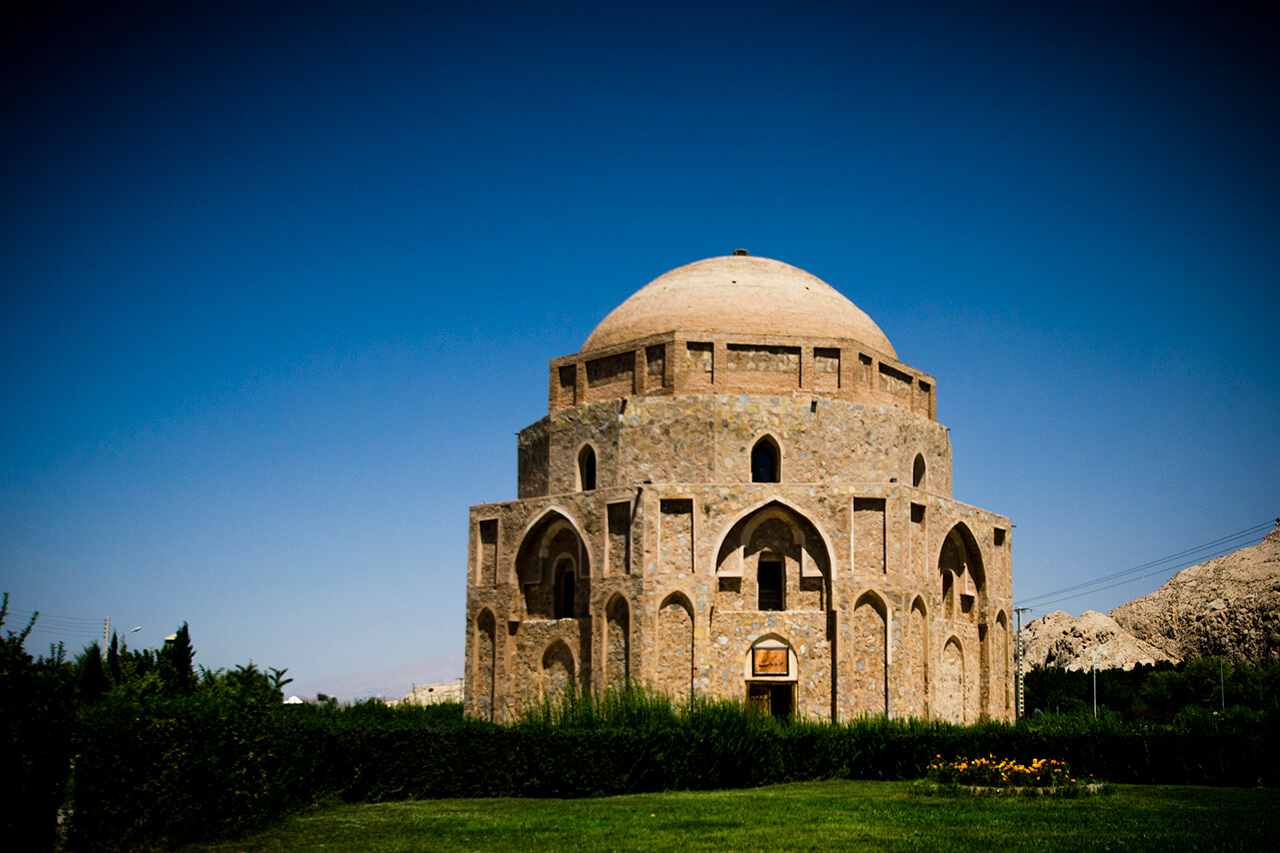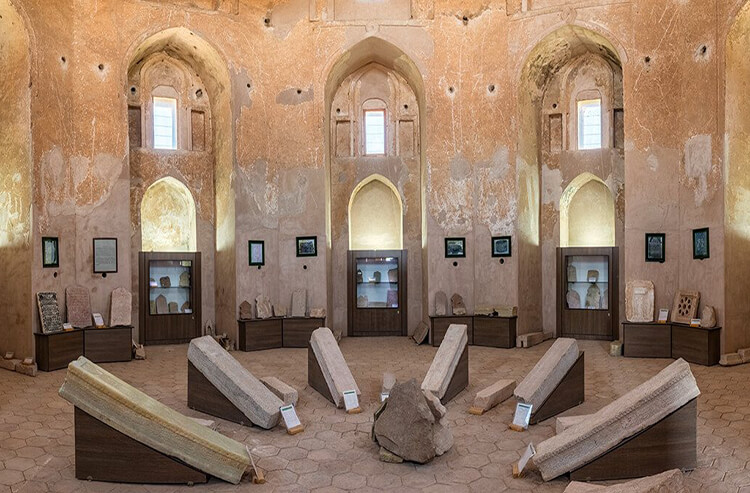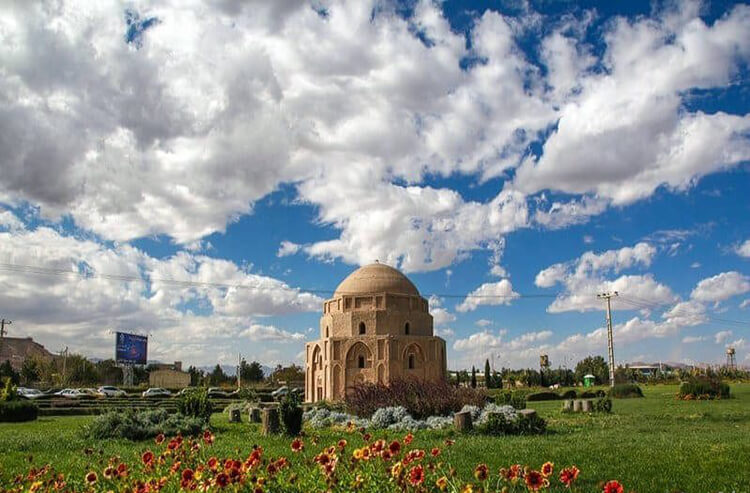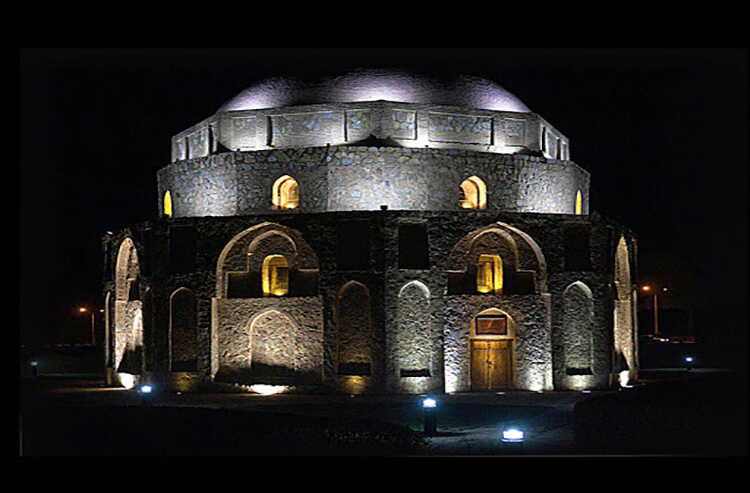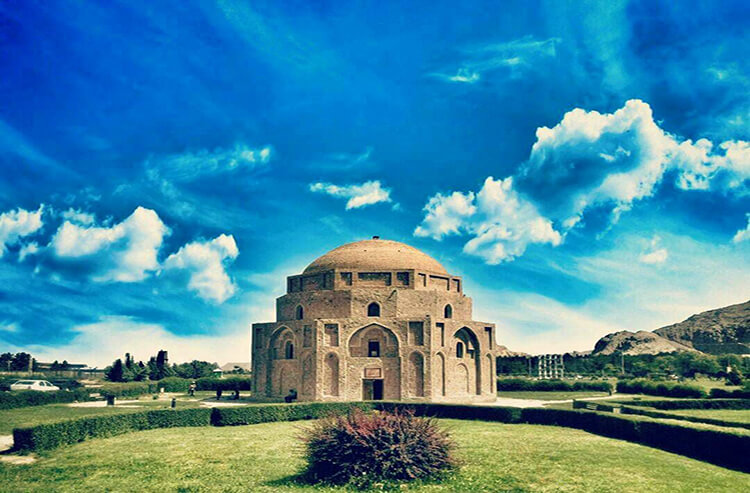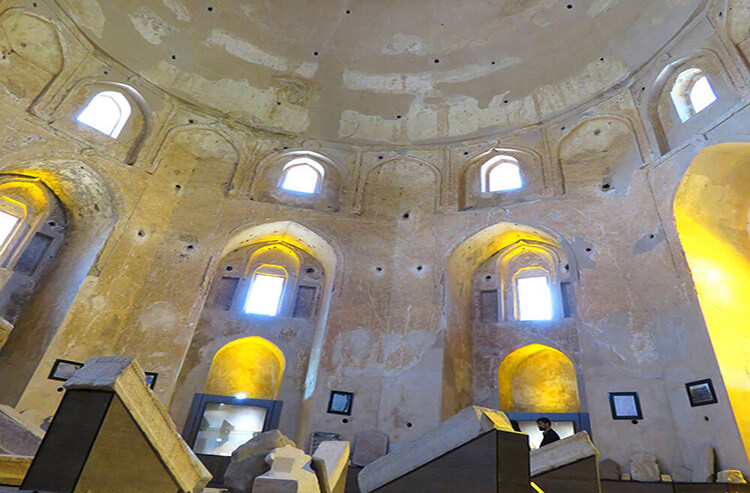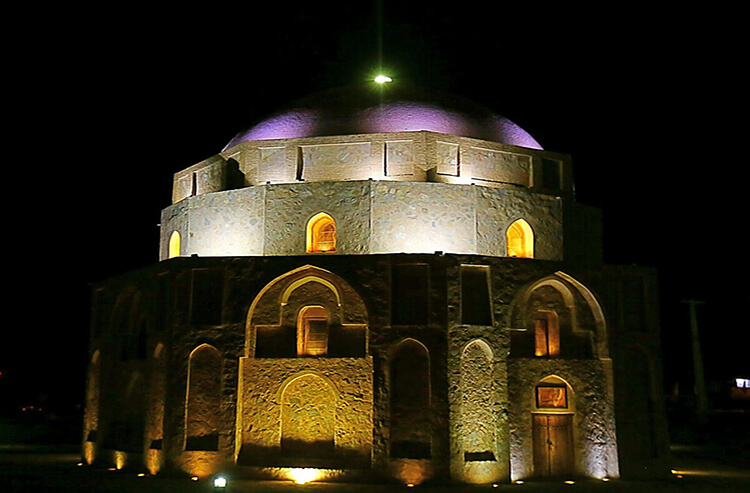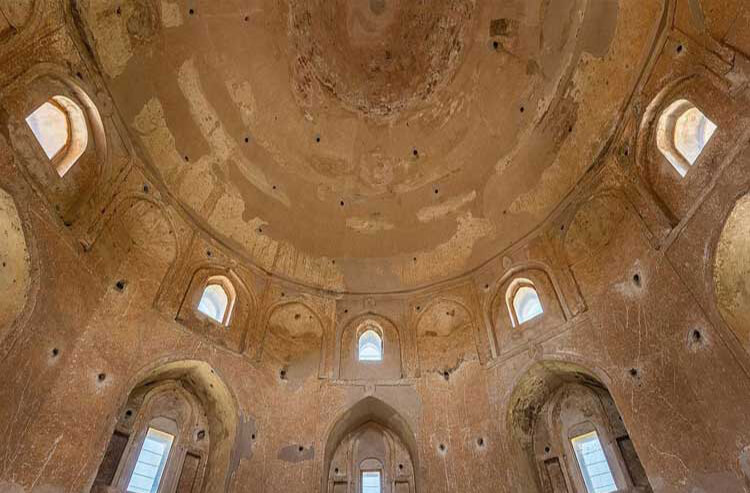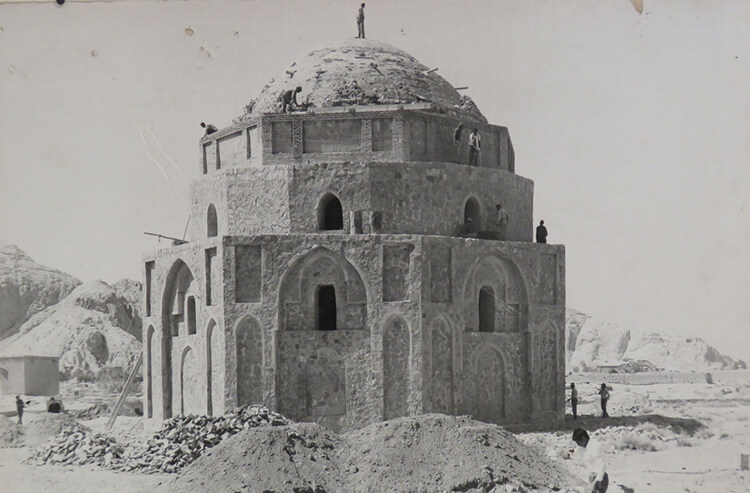Jabalieh Dome
In the eastern end of Kerman city there is a strong and large dome, made of stone and has saved from the trespassing hand of time. This eight-angle dome, known as Jahan Sang, Gonbad Gabri, Gonbad Ganj and Ma’bad Sangi.
The dome has been built on the slopes of Gholleh Dokhtar Mountain and is among the most beautiful architectural feats of Iran. It has been attributed to Seljuk rulers, but its architectural style shows that it has been inspired from the Sassanid period.
The octagonal building of the dome is 20 meters high and is surrounded by sunshades which reduce the diameter of the walls. Eight portals with a width of 2 meters are seen around the building, which are now, with the exception of one portal, all blocked with stones in order to prevent destruction of the whole building. Stones cut in various sizes are seen in the building of Jabaliyeh Dome, which have been attached together with a hard mortar. Instead of water, camel milk has been used in its construction which has contributed greatly to its overall strength.
It appears that inside the dome were inscriptions although there is little evidence of it left. The top portions have naturally fallen under their own weight with the passing of time while the bottom portions seem to have been destroyed by man. There is some evidence that Abu Ali Mohammad ibn Elias played a role in the Jabalieh Dome’s renovation.
There are different explanations for the Jabalieh Dome’s past purpose. The most common theory is that it is the resting place of a Zoroastrian priest while to a lesser extent some believe that Mohammad Tabashiri is buried there. There has been some speculation as to whether it could have been a Zoroastrian Fire Temple, although its general appearance and architecture varies with the common style of such temples. Another theory is that in years past there was a tombstone attached to one of the sides of the dome that was a gathering place for Zoroastrians for lighting candles and performing prayers and that the stone was washed away in the 1954 flood in Kerman.
The Jabalieh Dome gets its name from the term “Jabali” which had originally been “Gabri”. The changing of pronunciation of the dome’s name hints that its construction was before the Arab invasion of Iran.
In the year 1937 the Jabalieh Dome was registered by Iran’s Cultural Heritage Department. Today, with the transfer of a number of other historical inscribed pieces of the area to the Jabalieh Dome, it serves as a public museum.
